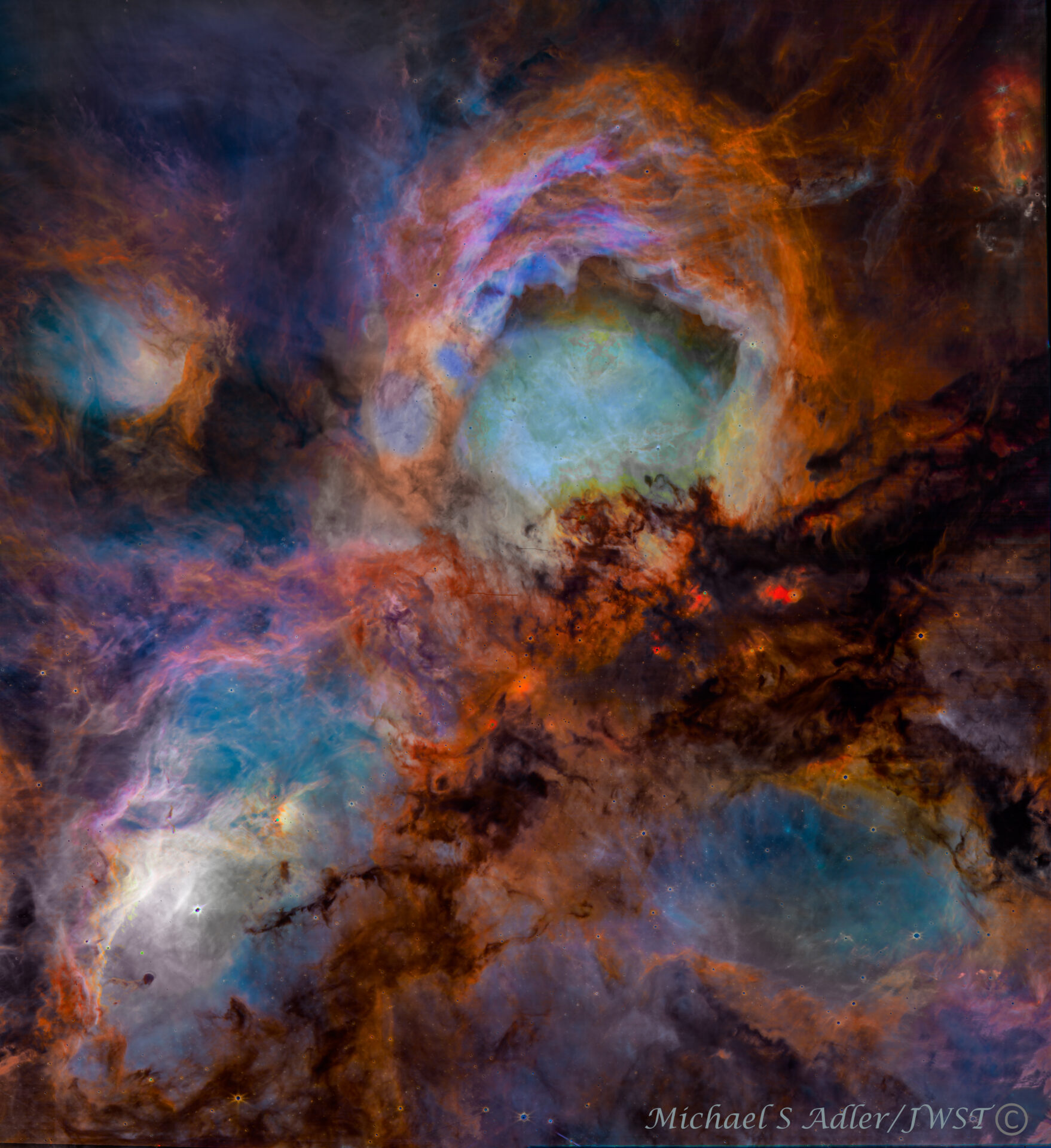Optics: James Webb Space Telescope(JWST)
Mount: JWST
Camera:NIRCAM(JWST Near Infrared Camera)
Filters: ,4440w-470n,335m,277w,200w,187n,090w
Dates/Times:Sept 2024, released July 2025
Location: Lagrange Point 2 orbit, ~1 million miles from Earth
Exposure Details: Six near infrared filters on the JWST NIRCAM ranging from 0.9u to 4.7u
Acquisition: Downloaded from the MAST website(Mikulski Archive For Space Telescopes)
Processing: Pixinsight was used to stretch the images from the six filters. Maximdl was used to align the data from the six filters and create an initial three wavelength color image created from the 444w(red),200w(green),and 090w(blue) filters. Photoshop was then used to combine this data with the 187n filter in cyan, 277w filter in yellow, and the 335m filter in orange using the Screen blending mode. StarX Terminator was used to eliminate the stars and Photoshop camera raw was used for the final processing. The stars were added back using PS2025.
Cats Paw Nebula, NGC6334, JWST(No Stars)
Original price was: $65.00.$52.50Current price is: $52.50.
Cats Paw Nebula, NGC 6334, To celebrate the NASA/ESA/CSA James Webb Space Telescope’s third year of highly productive science, astronomers used the telescope to scratch beyond the surface of the Cat’s Paw Nebula (NGC 6334), a massive, local star-forming region 4000 light years away. This area is of great interest to scientists, having been subject to previous study by NASA’s Hubble and retired Spitzer space telescopes, as they seek to understand the multiple steps required for a turbulent molecular cloud to transition to stars.
A section of the Cat’s Paw, a local star-forming region composed of gas, dust, and young stars. Four roughly circular areas are toward the centre of the frame: a small oval toward the top left, a large circle in the top centre, and two ovals at bottom left and right. Each circular area has a luminous blue glow, with the top centre and bottom left areas the brightest. Brown-orange filaments of dust, which vary in density, surround these four bluish patches and stretch toward the frame’s edges. Small zones, such as to the left and right of the blue circular area at top centre, appear darker and seemingly vacant of stars. Toward the centre are small, fiery red clumps scattered amongst the brown dust. Many small, yellow-white stars are spread across the scene, some with eight-pointed diffraction spikes that are characteristic of Webb. A few larger blue-white stars with diffraction spikes are scattered throughout, mostly toward the top left and bottom right. Toward the top right corner is a bright red-orange oval.
The final image is a composite of six images from the NIRCAM camera with red from the 4.4u, filter, orange from the 3.35u filter, yellow from the 2.77u filter, green from the 2.0u filter, cyan from the 1.87u filter and blue from the 0.9u filter. The processing consists of non linear stretching the images in Pixinsight, aligning them and doing an initial RGB image using MaximDl, and final assembly of the color image and processing in Photoshop 2025. The final processing was done by removing the stars using RC Astro StarX terminator. This image does not have the stars re-introduced unlike the previous one in the site and provides an un-obstructive view of the nebula itself.


